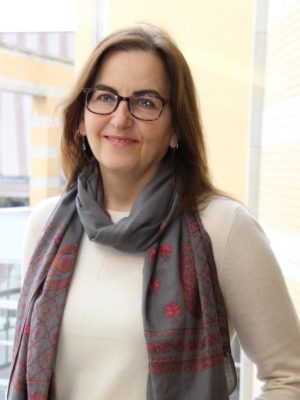
Margaret MacDonald, an associate professor and graduate program director in the Department of Anthropology in York University’s Faculty of Liberal Arts & Professional Studies, recently published a new study titled “Equity In Care: Midwifery In Ontario During the COVID-19 Pandemic” in the Canadian Journal of Midwifery Research and Practice.

The study – a partnership between MacDonald, her co-principal investigator Nadya Burton in the Midwifery Education Program at Toronto Metropolitan University, and the Association of Ontario Midwives (AOM) – explores the impact of the COVID-19 pandemic on midwifery care in Ontario. It examines the unique challenges midwives faced in delivering high-quality care during the crisis, and how they adapted their care as restrictions evolved.
Midwives attend close to 25 per cent of all births in the province of Ontario, and yet, as MacDonald and her co-authors observe, they remain somewhat marginalized. This fact was made even more apparent during the pandemic.
“Midwives were not listed as essential workers, did not have access to provincial stockpiles of personal protective equipment, and were not invited to the science tables convened by the Ministry of Health & Long-Term Care, where policy was being generated about how to provide care during the pandemic,” explains MacDonald. “This was despite the fact that midwives are frontline health workers caring for pregnant people and babies – two groups especially vulnerable to infection.”
According to MacDonald, early in the study, the AOM suggested the researchers pay particular attention to midwives working with clients from racialized and vulnerable communities, because they knew these communities would share an unequal burden of the pandemic’s impact. The researchers agreed, making it one of their primary objectives to look closely at how midwives worked to mitigate the pandemic’s impact on their racialized and marginalized clients, and how they adapted their care for these vulnerable groups during that time.
The study found that Ontario midwives indeed strove to offer equity in care during the pandemic – for example, continuing in-person and home visits for vulnerable women. The virtual appointment model, which worked well for so many health-care providers during this time, did not work for midwives of some more vulnerable clients.
“One midwife described to us how she met a street-involved client outdoors when she was afraid to come inside for prenatal appointments,” recalls MacDonald.
She found, too, that midwives had to be creative with their care – for example, finding workaround solutions for new mothers requiring postpartum visits while stuck in quarantine hotels.
Midwives were sometimes asked to go above and beyond their typical duties to help serve vulnerable communities in need. An Indigenous-focused midwifery practice, for example, was urged to step in as a trusted health-care provider to conduct COVID-19 testing and vaccinations for Indigenous groups.
“Our study revealed just how ready midwives are to step up – to expand their work into adjacent areas of reproductive health such as sexually transmitted infection testing and treatment, contraceptives and the management of medication abortion,” says MacDonald. “Our research makes the case that some of the things midwives were doing during the COVID crisis could be formalized within an expanded midwifery scope of practice to the benefit of the health-care system and patients.”
The study’s key findings show that during the COVID-19 pandemic, Ontario midwives developed unique ways of working, stepped into brand-new territory and faced serious burnout, all calling into question the original midwifery care model, whether or not it is sustainable and how it can be improved, both in this province and beyond.
“Documenting the work of midwives and the experiences of clients during the COVID-19 pandemic, and thinking about it critically as social scientists, we are contributing knowledge about strengths and challenges within the health-care system in Ontario,” says MacDonald.
